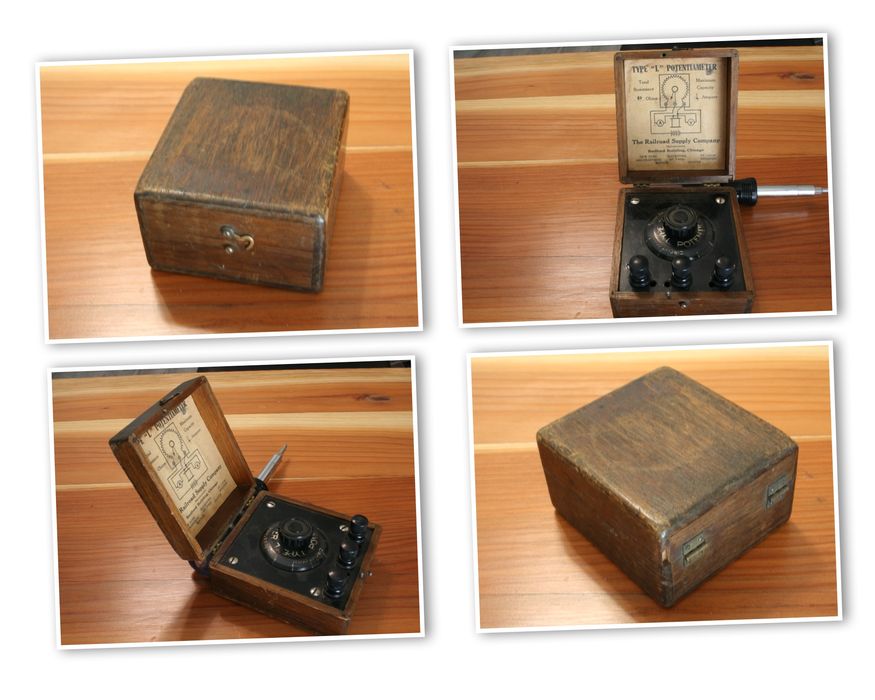Antique Railroad Potentiameter in wooden case – to test railroad signal relays 
By Mike Gaudy; posted August 13, 2023
View Original: Click to zoom, then click to magnify (2000 x 1600) 490KB
">

|
Antique Railroad Potentiameter in wooden case – to test railroad signal relays SALE Most railroads use track circuits to determine if sections of track are occupied by trains. These devices are fairly simple in design, and have been in use since 1872. Track circuits work by running a circuit using the rails to connect a power source at one end of the block with a relay at the far end. The relay and power source are connected to each rail by cables. As long as the circuit is complete, low voltage power flows down one rail, through a relay, and returns to the power source via the other rail. If the circuit is complete, the relay will be energized, which keeps signals in the "clear" position. If the circuit is broken, the system fails in a safe manner. A broken rail or a failed power source causes the relay to become de-energized and report the section of track as occupied. On the label below "potentiameter" (potentiometer) diagram is a schematic for testing. An amp meter is on one side; a volt meter on the other. The square device in the middle is the relay to be tested. At the bottom of the diagram is the battery to energize the circuit. Relays have to be tested periodically for pick up voltage or current; and drop away voltage or current. As the dial is rotated the relay coil becomes energized and the contacts of the relay will pick up. Rotating the dial the other way de-energizes the coil and the relay contacts drop out. All relays have set values and have to be tested and recorded on a regular basis in compliance with the Federal Railroad Administration and the railroad itself. If the relay exceeds or falls below the set values it has to be removed and/or repaired or replaced. It was an art to keep them operating and as many variables came into play such as weather conditions and particularly ballast resistance. DC track relays had a very low coil resistance (.5 ohms or less) where as DC line relays had a much higher value (500 ohms or higher). There are many types of relays (DC and AC) that were and still are used in the railroad industry. Positive Train Control (PTC) was the final nail in the coffins for most DC analog systems as most signal systems and grade crossing protection devices now operate on microprocessor controls. The company that supplied this rester has had many names and owners: 1855 American Signal Company 1895 The Railway Supply Company 1932 Western Railroad Supply Supply Company 1953 A Division of Western Industries Inc. 1968 Purchased by Federal Signal Corporation 1970 Western-Cullen a Division of the Federal Signal Corporation 1977 Western – Cullen – Hayes Inc. (current web site source of this info) I am offering this potentiameter for sale for $60 to include shipping in the USA. The hinges and clasp appear to be original. There is a small section of wood missing from one corner and the finish is worn; otherwise in amazing condition for its apparent age. Thank you to the two collectors that provided me with much "first hand" information. It was a fun learning experience for me. |